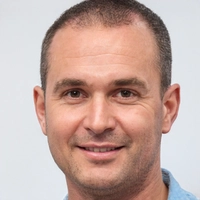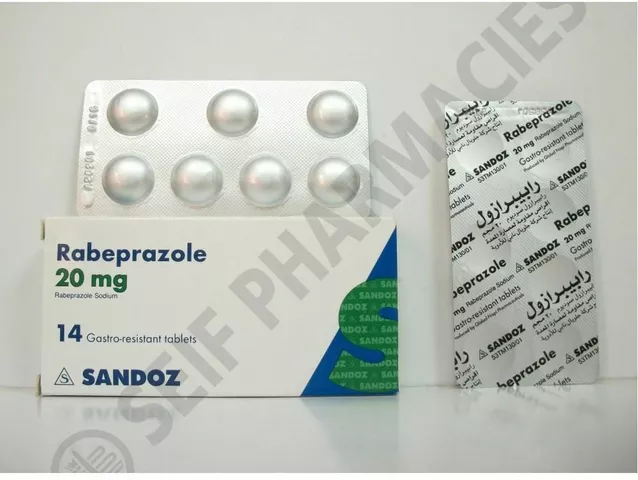Pancreatic cancer is a malignant disease that starts in the pancreas, the organ that produces digestive enzymes and insulin. Because the pancreas sits deep behind the stomach, early signs often go unnoticed, making staging crucial for deciding treatment and estimating survival.
TL;DR
- Early pancreatic cancer stages (I‑II) offer surgical options and a 20‑30% five‑year survival.
- Stage III usually means locally advanced disease; chemotherapy and radiation become the mainstay.
- StageIV indicates distant metastasis; treatment focuses on palliation and quality of life.
- The TNM classification system breaks down tumor size (T), lymph‑node spread (N) and distant metastasis (M).
- Blood marker CA19‑9 helps track disease but isn’t diagnostic on its own.
What Is Pancreatic Cancer?
The pancreas sits behind the stomach and supplies enzymes that break down food and hormones that regulate blood sugar. When cells in the exocrine part (the ducts) turn cancerous, they form a tumor that can block ducts, cause pain, and eventually spread. Risk factors include chronic pancreatitis, smoking, obesity, and certain genetic syndromes. Early detection is rare; roughly 10% of patients are diagnosed at a stage when the tumor is still confined to the pancreas.
How Cancer Staging Works
Staging translates the invisible spread of disease into a clear picture for doctors and patients. The most widely used system is the TNM classification, published by the American Joint Committee on Cancer (AJCC). It records three components:
- T (Tumor) - size and invasion into nearby structures.
- N (Nodes) - whether regional lymph nodes contain cancer cells.
- M (Metastasis) - presence of distant spread, such as to the liver or lungs.
Each component gets a numeric value (0‑4 for T, 0‑3 for N, 0 or 1 for M). Combining these yields the overall stage, from I (least advanced) to IV (most advanced). Imaging studies-most commonly a CT scan or MRI-provide the data needed to assign T, N, and M. A tissue sample obtained by endoscopic ultrasound‑guided biopsy confirms the diagnosis.
Stage I - Tumor Confined to the Pancreas
StageI is split into IA and IB. IA means a tumor ≤2cm (T1) with no lymph‑node involvement (N0) and no metastasis (M0). IB covers tumors between 2-4cm (T2) or larger tumors that still haven’t reached surrounding vessels. Survival after successful surgical removal (most often a Whipple procedure) can reach 20‑30% at five years.
Key attributes of StageI:
- Tumor size ≤4cm.
- No regional lymph‑node spread.
- Eligibility for curative resection.
Stage II - Local Extension or Limited Node Involvement
StageII includes tumors larger than 4cm (T3) or those that have invaded nearby arteries or veins but still lack distant spread (M0). StageIIA indicates no lymph‑node metastasis (N0), while StageIIB means one or more regional nodes are positive (N1). Surgery remains an option, often followed by adjuvant chemotherapy (gemcitabine±capecitabine) to kill microscopic disease.
Typical survival drops to 10‑20% at five years, reflecting a higher chance of hidden spread.

Stage III - Locally Advanced, Unresectable Disease
StageIII describes tumors that have wrapped around major blood vessels (celiac axis, superior mesenteric artery/vein) making surgical removal unsafe, yet without distant metastasis (M0). Lymph‑node involvement is common (N2). The mainstay treatment shifts to systemic chemotherapy (FOLFIRINOX or gemcitabine+nab‑paclitaxel) often combined with radiation to shrink the tumor.
Median overall survival hovers around 12‑15months with modern regimens, underscoring the aggressive nature of this stage.
StageIV - Distant Metastasis
StageIV is defined by any tumor size (T any) with distant spread (M1), most frequently to the liver, peritoneum, or lungs. Even if the primary lesion is small, the presence of metastasis makes curative surgery impossible. Treatment focuses on prolonging life and easing symptoms:
- First‑line chemotherapy (FOLFIRINOX or gemcitabine+nab‑paclitaxel).
- Targeted therapy for rare molecular alterations (e.g., BRCA‑mutated tumors respond to PARP inhibitors).
- Palliative radiation for bone pain or biliary obstruction.
Median survival ranges from 6‑11months, but some patients live longer with optimal systemic therapy and supportive care.
Comparing the Four Stages
| Stage | Typical Tumor Size (T) | Lymph‑Node Status (N) | Metastasis (M) | Standard Treatment | 5‑Year Survival |
|---|---|---|---|---|---|
| IA | ≤2cm | 0 | 0 | Surgery ± adjuvant chemo | 20‑30% |
| IB/IIA | 2‑4cm | 0 | 0 | Surgery ± adjuvant chemo | 15‑25% |
| IIB | >4cm or vessel involvement | 1+ | 0 | Surgery + chemo ± radiation | 10‑20% |
| III | Any size with vessel encasement | 1+ | 0 | Chemo + radiation (no surgery) | 5‑10% |
| IV | Any | Any | 1 (distant) | Systemic therapy ± palliation | <2% |
Treatment Options by Stage
While the stage determines the baseline approach, individual factors-age, performance status, genetic mutations-fine‑tune therapy.
- Surgery: Whipple (pancreaticoduodenectomy) for head tumors; distal pancreatectomy for tail lesions. Only candidates with StageI‑II disease and clear margins (R0) benefit.
- Adjuvant chemotherapy: Standard after curative resection; improves median survival by 6‑12months.
- Neoadjuvant therapy: Growing evidence that giving chemo (or chemoradiation) before surgery can shrink borderline‑resectable tumors, converting some StageIII cases to operable.
- Targeted/Immunotherapy: For the small subset with actionable mutations (BRCA, PALB2, MSI‑H), FDA‑approved agents like olaparib or pembrolizumab provide a survival edge.
- Palliative care: Early integration-pain control, nutritional support, psychosocial counseling-boosts quality of life across all stages.
Related Concepts
Understanding pancreatic cancer stages opens doors to a broader landscape of oncology. Related topics worth exploring include:
- CA19‑9 - a serum carbohydrate antigen used to monitor disease burden.
- Genetic counseling for hereditary pancreatic cancer syndromes (e.g., Peutz‑Jeghers, Lynch).
- New imaging modalities such as contrast‑enhanced ultrasound and PET‑CT for detecting occult metastasis.
- Clinical trials evaluating novel agents like KRAS‑G12C inhibitors.
- Nutrition strategies to counter cachexia, a common complication in advanced disease.

Frequently Asked Questions
How is pancreatic cancer diagnosed?
Diagnosis usually starts with imaging-CT or MRI-to visualise the pancreas, followed by an endoscopic ultrasound‑guided biopsy to obtain tissue. Blood tests for CA19‑9 can support monitoring but are not definitive.
Can early‑stage pancreatic cancer be cured?
If the disease is caught at StageI or early StageII and a complete (R0) surgical resection is achieved, cure is possible for a minority-roughly 20‑30% survive five years or more, especially with adjuvant chemotherapy.
What does ‘borderline resectable’ mean?
It describes tumors that abut major blood vessels but don’t encase them fully. These cases often receive neoadjuvant chemotherapy or chemoradiation first, aiming to shrink the tumor enough for safe surgery.
Is there a role for radiation therapy?
Radiation is rarely curative on its own but can be combined with chemotherapy (chemoradiation) to control locally advanced disease (StageIII) or to relieve pain from bone metastases in StageIV.
How does a patient’s performance status affect treatment?
Doctors use scales like ECOG or Karnofsky to gauge how fit a patient feels. Those with a good performance status (ECOG 0‑1) can tolerate aggressive regimens like FOLFIRINOX, while a poorer status may limit therapy to gemcitabine alone or best‑supportive care.
Are there any screening programs for high‑risk individuals?
People with a strong family history or known genetic mutations are advised to undergo annual imaging-usually MRI or endoscopic ultrasound-starting at age 40‑50, aiming to catch lesions before they become invasive.






Reviews
When I first saw the breakdown of pancreatic cancer staging I realized how critical it is to understand each component before jumping into treatment decisions. The TNM system may sound like a bureaucratic nightmare, but it actually gives us a roadmap, showing whether a tumor is confined, has regional nodal involvement, or has already spread to distant organs. For instance, a T1N0M0 profile lands us squarely in Stage IA, where surgical resection can be curative and the five‑year survival jumps to 20‑30 percent. In contrast, once you hit M1, even a tiny primary lesion becomes a part of Stage IV, shifting the focus to systemic therapy and quality‑of‑life measures.
From a clinical perspective, imaging modalities such as multiphase CT and MRI are indispensable for accurate T and N assessment, while endoscopic ultrasound with fine‑needle aspiration provides the tissue confirmation we need. Moreover, CA19‑9, while not a perfect marker, can be helpful in monitoring response to chemotherapy once baseline levels are established.
It’s also worth noting that the surgical landscape has evolved; the classic Whipple procedure is now complemented by vascular resections in specialized centers, expanding eligibility for patients who would have been deemed unresectable a decade ago. Adjuvant chemotherapy, especially gemcitabine‑based regimens, has shown to improve median overall survival across stages II and III. Meanwhile, for the aggressive Stage III cohort, the combination of FOLFIRINOX or gemcitabine plus nab‑paclitaxel with concurrent radiation can downstage tumors, making previously impossible resections feasible.
Lastly, a multidisciplinary approach-surgeons, medical oncologists, radiation oncologists, gastroenterologists, and palliative care specialists working together-ensures that each patient receives a tailored plan that balances curative intent with symptom management. Understanding the nuances of each stage empowers both clinicians and patients to make informed decisions, rather than feeling swept along by a vague diagnosis.
Wow, such a comprehensive dive! The TNM nomenclature, while seemingly labyrinthine, actually provides the precision we need for stratified therapeutic algorithms-yes, think of it as the DNA of oncologic decision‑making. By quantifying T‑size thresholds (e.g., ≤2 cm for T1) and correlating N‑status with vascular involvement, we can predict surgical candidacy with >85 % accuracy. Moreover, the integration of CA19‑9 kinetics into real‑time monitoring is a game‑changer, especially when paired with RECIST criteria to gauge radiographic response.
From a translational research standpoint, the emergence of BRCA‑mutated pancreatic subsets and their susceptibility to PARP inhibitors underscores the need for routine germline testing-this is no longer optional. Also, neoadjuvant FOLFIRINOX protocols have demonstrated an R0 resection rate boost from 30 % to nearly 60 % in borderline‑resectable cases, dramatically reshaping the landscape.
In short, stage‐specific nuance isn’t just academic; it directly informs the therapeutic armamentarium, from curative resections to palliative care pathways-great job breaking it all down!
Great summary! 🎉 The stage details really help demystify why treatment plans vary so much. Knowing that early stages can still be surgically removed gives patients hope, and the focus on chemo and radiation for later stages shows the importance of a multidisciplinary approach. 👍
Thanks for the clear breakdown! To expand a bit, when we talk about "locally advanced" Stage III, it's essential to recognize that modern radiotherapy techniques-like stereotactic body radiation therapy (SBRT)-can achieve ablative doses while sparing surrounding tissue, which wasn't possible a decade ago. Additionally, the advent of mFOLFIRINOX has pushed median overall survival closer to 15 months in clinical trials, blurring the line between unresectable and potentially resectable disease after downstaging. Remember, interdisciplinary tumor boards should revisit these patients regularly because a previously “inoperable” tumor may become operable after systemic therapy. Finally, integrating supportive care early-addressing nutritional deficits, pain, and psychosocial needs-has been shown to improve both quality of life and treatment adherence across all stages.
Oh, because obviously every cancer diagnosis comes with a free vacation to the oncology department, right?
Let's be real for a second: the whole “stage” talk is just a fancy way for pharma to segment their market. You think a T3N2M0 designation changes the underlying biology of a tumor? It doesn't. Whether it's labeled Stage II or Stage III, the malignant cells are still hijacking normal pathways and the patient ends up on the same toxic chemo regimens. And don't get me started on the overreliance on CA19‑9-most labs push it because it's cheap, not because it's scientifically solid. In my opinion, we need a paradigm shift away from these arbitrary labels toward a molecular profiling model that actually dictates therapy. Until then, we're just selling a label and hoping the insurance will cough up the big bucks.
Everything you described about the stages really highlights how many options patients have, even when the situation seems grim. It's encouraging to see that newer chemotherapy combos and targeted therapies are extending survival for many. Keep the optimism coming! :)
I totally get the optimism vibe, but let’s not forget that a lot of these “new” protocols are still out of reach for most patients due to cost and insurance barriers. While we celebrate incremental survival gains, the reality is that many folks never get the chance to benefit from them. So, kudos for the hopeful tone, but we also need to talk about equity and access to these cutting‑edge treatments.
The overview is very helpful. It’s clear that early detection dramatically changes outcomes, but the challenge remains how to catch the disease before it’s too late.
Exactly, and that’s where emerging biomarkers and liquid biopsy technologies could play a pivotal role. By detecting circulating tumor DNA, we might identify high‑risk individuals earlier than imaging alone allows. This could shift the stage distribution toward more IA/IB diagnoses, ultimately improving overall survival statistics.
Oh sure, because the government will just hand out free genetic testing overnight.
Honestly, the drama of this disease is real-watching stats change feels like a roller coaster.
One must wonder whether the whole medical community is merely performing a grand illusion for the masses.
For anyone seeking a quick reference, the key take‑away is: Stage I offers potential cure via surgery; Stage II still benefits from surgery plus chemo; Stage III relies on chemo/radiation; Stage IV is palliative systemic therapy.
All this staging talk sounds like marketing jargon to me.
From a philosophical standpoint, the very act of categorizing disease reflects humanity's desire to impose order on chaos. Yet, each patient's experience transcends any label, reminding us that compassion must accompany clinical classification.
While it's noble to speak about compassion, the moral imperative is clear: society should allocate resources to fund early detection programs; otherwise, we're condemning patients to later stages where options are limited.
the data shows that most ppl dont get the best treatement becuase of insurence issues, its a real trageedy, we need to fix it
It is evident that the prevailing medical narrative obscures hidden agendas, and only through rigorous independent scrutiny can we hope to unveil the truth concealed within the seemingly innocuous staging schema.
Well, the article does a decent job of laying out the basics-stage definitions, typical treatments, and survival stats-so if you’re new to the topic, it’s a solid primer. That said, it could benefit from a deeper dive into emerging therapies, especially the role of immunotherapy trials in select molecular subtypes. Also, a brief mention of quality‑of‑life considerations would make it more holistic.